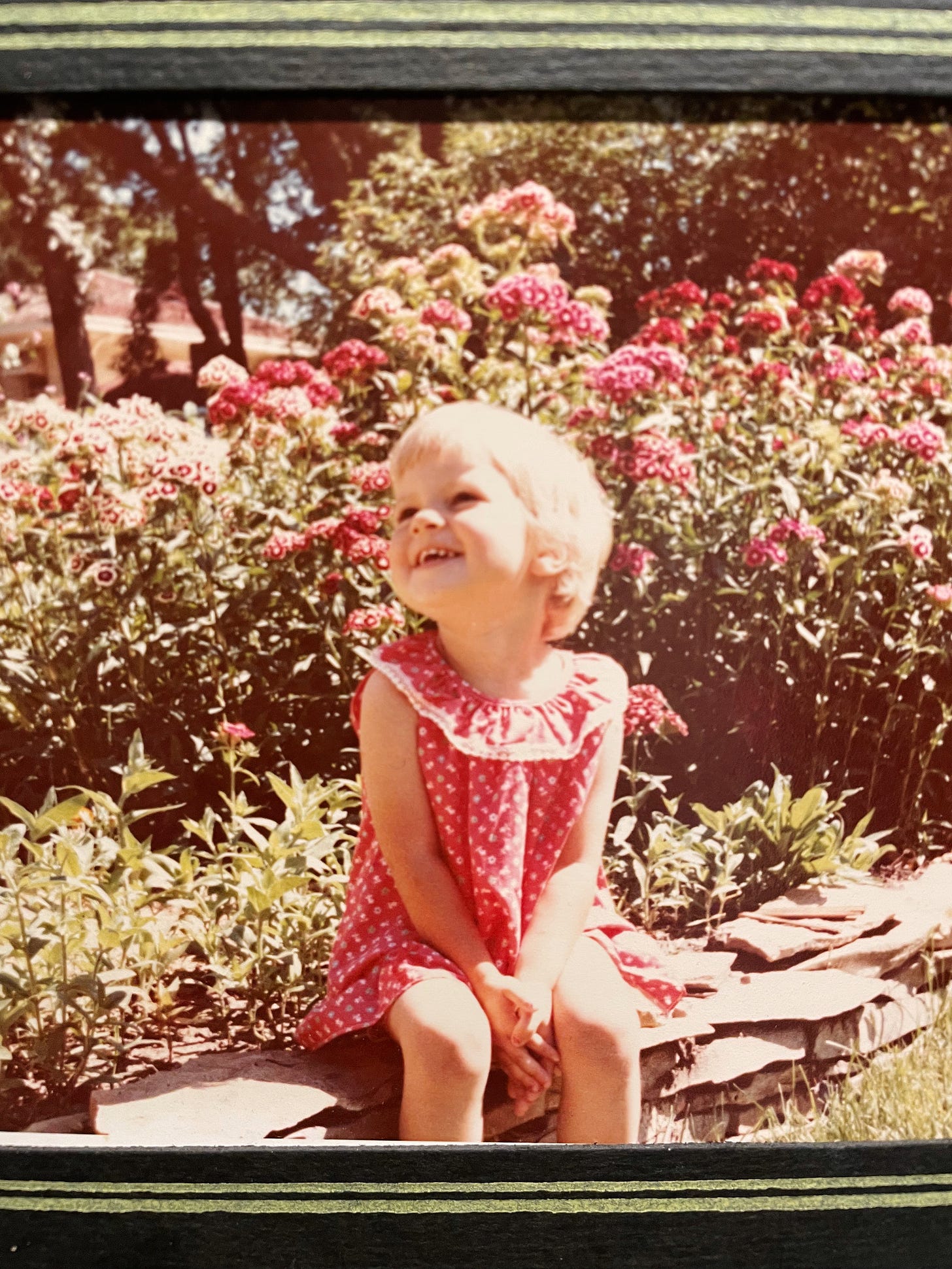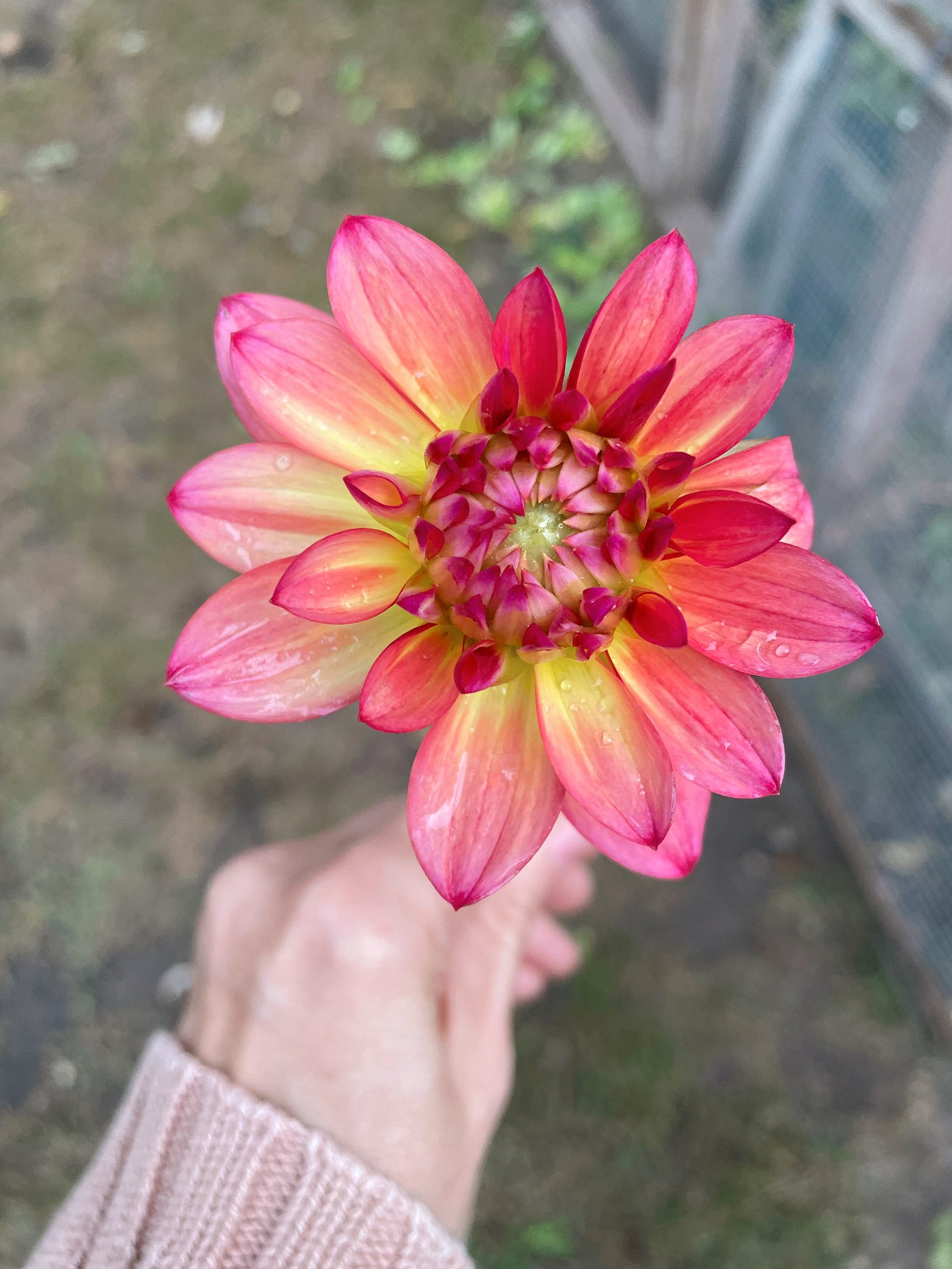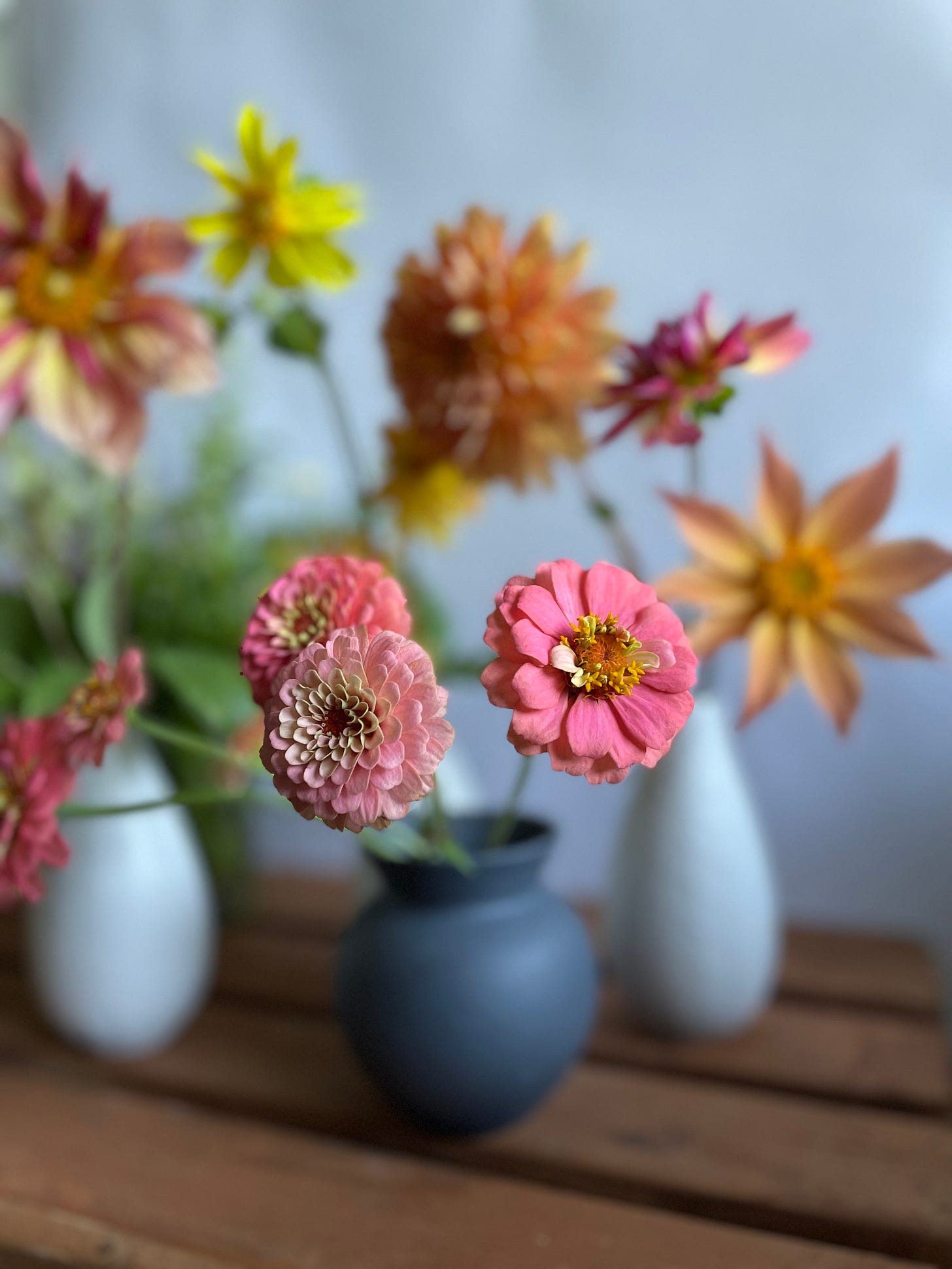I have a picture of myself from when I was three years old. It’s resting, unframed, in a desk drawer at home. In the picture, I sit on the edge of my grandmother’s garden — a well-composed structure of flat rock she used to border her raised beds. I wear a red shift dress with white polka dots, complete with a ruffled collar around the neckline. My short hair, bleached from the sun, barely extends beyond my ears. Behind me, a thicket of phlox, sweet William, and yarrow frame my profile with blossoms in pink, red, and magenta hues.
My hands are clasped together tightly and resting between my knees. I’m gripping my hands as if I’m about to float away with happiness. My face is turned slightly to the right and my focus looks out beyond the camera. I wear an enormous smile on my face. If you read the position of my body and the way my eyes look expectantly toward the distance, you might guess I was mid-laugh when the picture was taken.
This photograph, faded with age, is one of the only artifacts I have documenting my grandmother’s garden when I was very young. I purposefully keep this photo in my desk where it’s protected from sunlight and within quick reach.
My expression of embodied joy functions as a touch point on occasion these days. I remind myself that when I was a child, I let joy permeate my entire being. I’m too quick as an adult to let joy live in containers: in my heart, in my hands, in my head. If you’ve lived a life, any type of life, you might know about containing — it’s a protective measure meant to absorb the shock of everyday living, but in the end, prevents us from feeling the totality of life’s experiences.
I originally posted a version of this essay a year ago. Since then, I’ve cultivated a sense of unmoderated joy more frequently, the kind that inhabits everything. Letting go of insignificant scraps of life — the things I don’t need to overthink (the kids’ snacks, random hardware from projects we never finished, old clothes waiting to be donated), means I can more fully embrace the pleasure that comes with doing things I love, like gardening.
And I’ve discovered many new things to love in the garden this summer. Growing new flowers, like dahlias, scabiosa, eucalyptus, strawflower, sunflowers, and statice.
Growing new food, like orange accordion tomatoes, purple carrots, bak choy, new garlic varieties, and rosemary grown from last summer’s cuttings.
Trying out new gardening methods, like covering tender transplants with plastic cloches in army spring, placing bird netting over the cut flower garden to prevent pests from ruining vulnerable blossoms, remembering to fertilize container annuals every week, harvesting nearly triple the number of flowers for dried wreaths.
I wish I could tell my grandmother about these pockets of joy I’ve cultivated over the summer. I imagine we would take a walk around the edge of her garden beds, slowly, while I held her arm and spoke excitedly about my adventures in growing. She would lean toward me, her silvered curls inches from my face, and listen, perhaps recognizing my enthusiasm. I wonder, when she saw me perched along the edge of her flower garden all those decades ago, did she notice how easily, happily I sat near the flowers? Did she imagine a time when we would stroll amongst the flowers, swapping stories and advice, like old friends?
In the years before she moved from her own house and into assisted living, she dug up several plants and gave them to me. Each summer after my annual visit, I came home with heuchera, phlox, tiger lilies, and many other flowers harvested by her 95 year old hands. Her garden shovel, a near extension of her frail arms, pierced the clay soil with ease. I watched her work: first by rupturing the soil near the plant’s base, then working surrounding soil by pushing down with her foot on the shovel to loosen roots. Her arthritic hands scooped the plant up from the ground before handing it to me. She refused my offer to help every time.
In 2017, my grandmother passed away at the age of 103. Some of the plants she gave me continue to grow in my own garden. When I look at the purple phlox spreading in a garden bed near the house, I get the same giddy feeling captured in that old photograph of me. If I don’t hang on tightly to the ground beneath me, I might just float away from happiness.
Thanks for reading this month’s essay. See you back here in late October.
-Betsy
Know people in your life who would enjoy flower photographs and long-form essays about gardening? Share the Roots & Vines newsletter with them.








You are very talented writer and I smile so when you write about our wonderful mom/grandmother.